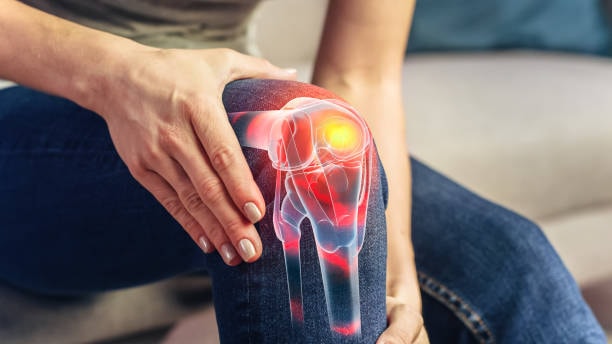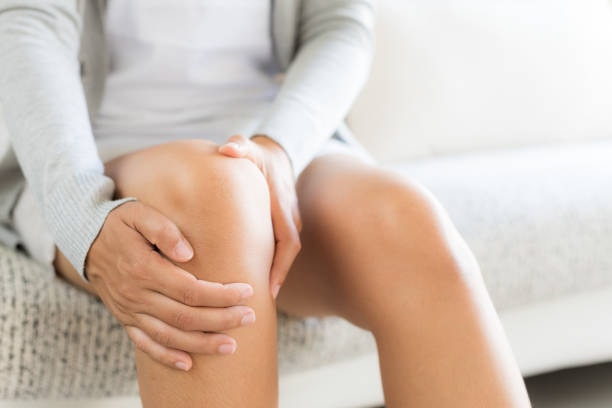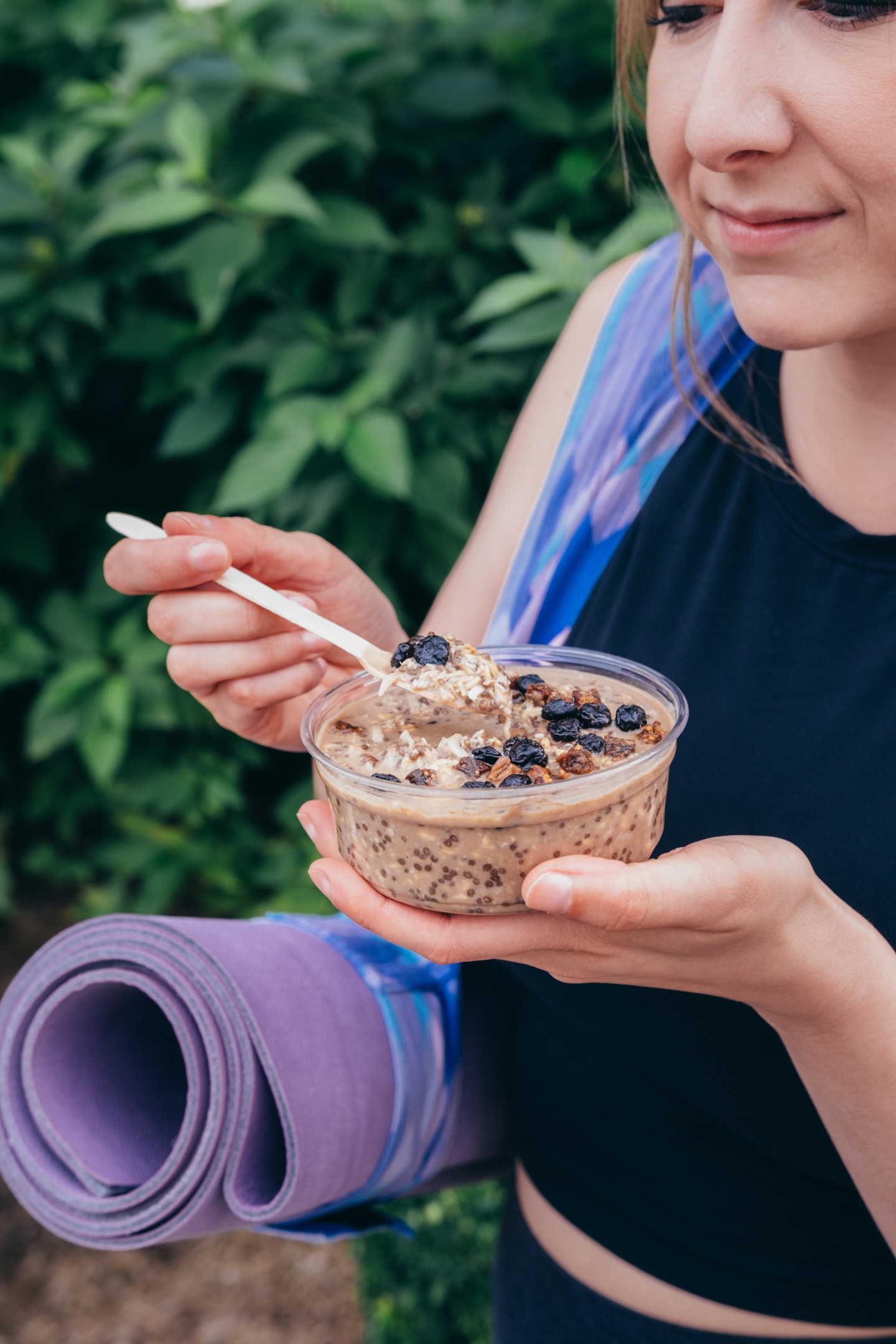
Overview of Our Joint Health
A joint is where the ends of at least two bones come together, for example, the knee, elbow, shoulder, hip etc. Joints are made up of bones, ligaments, tendons, cartilage, synovial fluid, nerve fibres, and collagen, to name some.
Cartilage is the protective cushioning between your bones and synovial fluid provides lubrication. Collagen is a protein that provides elasticity to ligaments, tendons and cartilage.
Tendons attach muscle to bone and are strong and non-elastic. Their function is to transfer the force of the muscle to move the bone and therefore facilitate movement. In contrast, ligaments attach bones to other bones, which provides stability. They are tougher and more elastic, which helps prevent excessive movement.

Understanding Joint Pain
Joint pain is a common condition that affects millions of people worldwide. It can be caused by various factors, including injury, infection, and chronic diseases such as rheumatoid arthritis. Joint pain can range from mild to severe and can affect any joint in the body, including the knees, hips, hands, and feet. Understanding the causes and symptoms of joint pain is essential to finding effective treatment options. For instance, rheumatoid arthritis is a chronic disease that leads to swelling and pain in the joints, often accompanied by joint stiffness and reduced mobility. By identifying the root cause of joint pain, individuals can seek appropriate treatments to relieve pain and improve joint function.
Common Causes of Joint Pain
Joint pain is a common symptom with a multitude of causes. Other symptoms due to joint-related injuries or conditions, including arthritis symptoms, are sharp and severe or dull and achy pain, stiffness and limited range of motion, swelling and a warm sensation over the joint.
Many joint-related conditions will also affect the muscles, tendons and ligaments which can cause further aches, tenderness and even bruising or discoloration.
There are many causes of joint pain, however, some common culprits are different types of inflammation, in addition to general overuse. Osteoarthritis occurs when your cartilage wears away. When this happens your joints become painful and stiff. Rheumatoid arthritis is more chronic and causes swelling and pain in your joints. Bursitis is when there is inflammation of the bursa (found in your hip, knee, elbow, and shoulder) usually due to overuse. Tendinitis is inflammation of your tendons, again typically caused by overuse.
Other risk factors are lack of muscular conditioning, poor form during exercise, overtraining, repetitive movement through sport, being overweight, poor dietary habits, age, to name a few.
Prevention
Reducing risk factors can help prevent joint injuries. A few examples are to ensure you partake in exercise to strengthen your muscles and joints (see more below), maintain proper form during exercise, stop or reduce movement when you do feel a flare-up instead of pushing through, rest completely and not overtrain when needed, avoid movements that cause pain or put your body in compromised positions.
Further, maintaining a healthy weight and eating a mostly whole foods diet to support your muscles, tendons, ligaments and collagen (see more below).

Physical Activity for Joint Health
Exercise can help reduce the risk of injury as stronger joints are able to withstand more stress, can help improve joint function and prevent degeneration. In general, exercise such as strength training in particular can help strengthen your joints by building muscular strength, endurance and power (all of which are trained differently). Building strong muscles around the joint can reduce the pressure placed on joints. Strength training will also increase bone density. Resistance training adds stress to bones, which makes them stronger and can prevent or slow down the rate of loss that occurs with aging. Strength training will improve tendon stiffness and thickening which will reduce the risk of tendon strains.
Training to improve your flexibility and mobility (which are different), can be beneficial for joint health. Flexibility is one’s passive range of motion, versus mobility is your active range of motion. Improving your mobility (active range of motion) can help maintain joint function, relieve stiffness and put less stress on joints.
General movement will help to reduce inflammation, promote the circulation of nutrients and oxygen to joints and release synovial fluid which will help lubricate your joints. Exericse compresses joints, which in turn forces nutrient rich fluid into the cartilage. Our cartilage, doesn’t have its own blood supply, therefore it needs to get its nutrients from the fluids around it.
Plyometrics and isometrics are very helpful when it comes to strengthening the tendons. Isometric exercises are when you hold the muscle in a fixed place under tension. This is beneficial for improving strenth in weaker areas of joints, help promote healing of tendons and alleviate pain. Isometrics can help strengthen weak muscles as well as provide stabilization. Plyometrics utilize the stretch shortening cycle or the muscle and tendon, which improves the force that is produced and the rate at which the tendon recoils. Working plyometrics will improve the motor neuron response, increased strength and the rate of force development. Plyometrics will increase muscle stiffness and tendon extensibility.
Balance and coordination exercise can help reduce the risk of strains and sprains. Furthermore, balance training can help reduce the risk of falls. Working on your coordination will help improve your muscular control and therefore the body is better able to handle sudden movements. This can help reduce the risk of joint dislocations, strains, sprains and allow you to have better control over your muscles.

Nutrition for Joint Health
A diet that helps reduce inflammation in the body, known as an anti inflammatory diet, can be beneficial for individuals who are experiencing joint pain or recovering from tendon or ligament injuries.
Anti-inflammatory diets, such as the Mediterranean diet and the DASH diet have been beneficial to help promote anti-inflammatory benefits.
The Mediterranean diet is a diet rich in vegetables, fruits, beans, lentils and nuts. Whole grains, extra virgin olive oil and omega 3 rich fish is also consumed. A moderate amount of dairy, little to no red meat and instead more poultry, fish and beans. The diet recommends 3 servings of vegetables per day, 3 servings of fruit per day, 3-6 servings of whole grains and starchy vegetables per day, 1-4 servings of olive oil per day, 3 servings of legume per week, 3 servings of fish per week, 3 servings of nuts per week, no more than one ounce of pouly and dairy per day, up to 1 egg per day, no more than 1 serving of red meat per week and 1-2 servings of wine per day at most.
The health benefits of following an anti-inflammatory diet like the Mediterranean diet are well-documented, including improved heart health and reduced inflammation, which can significantly alleviate joint pain.
The DASH diet (dietary approaches to stop hypertension) focusses on reducing the amount of sodium, saturated fat and cholesterol people consume. The diet recommends 4-5 servings of vegetables per day, 4-5 servings of fruit per day, 7-8 servings of grains per day, 2-3 servings of dairy per day, 2 servings of lean meat/poultry/fish per day, 4-5 servings of nuts/seeds/beans per week and 2-3 servings of fish and oils per day. furthermore, it recommends no more than 2 drinks per week.
Generally, you want to consume a mostly whole foods diet, which includes fruits and vegetables daily, healthy fats like olive oils, nuts and seeds, whole grains and legumes, lean meats, fish and seafood.
Omega 3 rich foods are important to add into your diet, such as salmon, trout, mackerel, herring, and anchovies. Plant sources such as flaxseed, chia seeds and walnuts.
Skip the meal prep without sacrificing quality, Athletes Kitchen delivers fresh, chef-crafted meals designed to fuel your lifestyle, so you can focus on what matters most.
Foods to Eat for Healthy Joints
A healthy diet rich in anti-inflammatory compounds can help alleviate joint pain and promote healthy joints. Some of the best foods to eat for healthy joints include:
- Fatty Fish: Salmon, tuna, and other fatty fish are rich in omega-3 fatty acids, which have potent anti-inflammatory properties that can help reduce inflammation and relieve joint pain.
- Turmeric: This vibrant yellow spice contains curcumin, a powerful anti-inflammatory compound that can help fight inflammation and improve joint pain.
- Ginger: Known for its anti-inflammatory properties, ginger can help relieve joint pain and reduce inflammation.
- Olive Oil: Rich in healthy fats, olive oil can help reduce inflammation and promote healthy joints.
- Avocado: A great source of healthy fats and antioxidants, avocados can help reduce inflammation and support joint health.
- Berries: Blueberries, raspberries, and other berries are packed with antioxidants and anti-inflammatory compounds that can help reduce inflammation and promote healthy joints.
Foods to Avoid
Some foods can exacerbate joint pain and inflammation, and it’s essential to avoid them. These include:
- Sugars and Refined Grains: Foods high in sugars and refined grains can stimulate inflammation and worsen joint pain.
- Unhealthy Fats: Found in processed foods and fatty dairy products, unhealthy fats can contribute to joint pain and swelling.
- Omega-6 Fatty Acids: Often found in processed foods, omega-6 fatty acids can promote inflammation and should be limited.
Foods that you want to limit or avoid are items such as refined carbohydrates like pastries, fried foods, processed meats and cheeses, ready-to-eat meals etc. It’s okay if you have to consume these foods, however, we want to minimize our consumption and when possible opt for the healthier version, if there is one.

Supplements for Joint Health
Supplements can help support your diet to reduce inflammation and strengthen the muscles, ligaments, tendons and collagen supporting your joints. There are many supplements that are marketed to improve joints, however the scientific evidence behind them are limited if any.
In general, fish oil is beneficial for supporting your tendons and reducing inflammation. It is recommended to consume 200-500 mg of EPA and DHA per day. This can be achieve by eating at least 150 grams of cooked fish per week. Cod liver oil will also provide vitamin A and D. Krill oil will contain omega 3s primarily as phospholipids, which have a higher bioavialaibity according to some literature.
Collagen and vitamin C have been shown to help with tendon health. Studies have shown that collagen can help reduce joint discomfort and pain and improve joint function. It is recommended to take 15-25 grams of hydrolyzed collagen with 50 mg of vitamin C, 40-60 minute before training. Taking collagen and vitamin C before training is an effective way to increase the collagen content in ligaments and has been shown to improve the structure and function of connective tissue. Food sources of collagen are bone broth, chicken skin and slow cooked meats with the bone in. Food sources of vitamin C are citrus fruits, bell peppers and potatoes (with the skin). Vitamin C, in addition to copper, zinc and manganese support collagen synthesis (which is produced in the body from the amino acids proline, hydroxyprolin and glycine).
There are many anti-inflammatory supplements that have been associated with joint pain relief. Some of these are glucosamine, chondroitin, curcumin, boswellia and MSM (methylsulfonylmethane). Again, the scientific evidence for these supplements is limited and there is a lot of individual variety and context dependent cases to consider.
When choosing a supplement, it is important to review the quality of ingredients, the credibility of the manufacture, look for third party testing, transparacing about sources, avoid formulations with unnecessary ingredients and fillers and speak to a health care provider about potential contraindications.

Relieving Joint Pain
Relieving joint pain requires a multi-faceted approach that includes lifestyle changes, dietary modifications, and medical treatment. Some effective ways to relieve joint pain include:
- Exercise: Engaging in physical therapy and gentle stretching can help improve joint mobility, reduce stiffness, reduce pain, and strengthen the muscles around the joints.
- Dietary Supplements: Supplements can help promote healthy joints and reduce inflammation.
- Heat and Cold Therapy: Applying heat or cold to the affected area can help reduce pain and inflammation.
- Stress Reduction Techniques: Practices such as meditation and yoga can help reduce stress, which in turn can help relieve joint pain and promote relaxation.
Treatment options for joint pain depend on the underlying cause and severity of the condition. By understanding the various treatment options available, individuals can work with their healthcare providers to develop a comprehensive plan to manage and relieve joint pain effectively.
